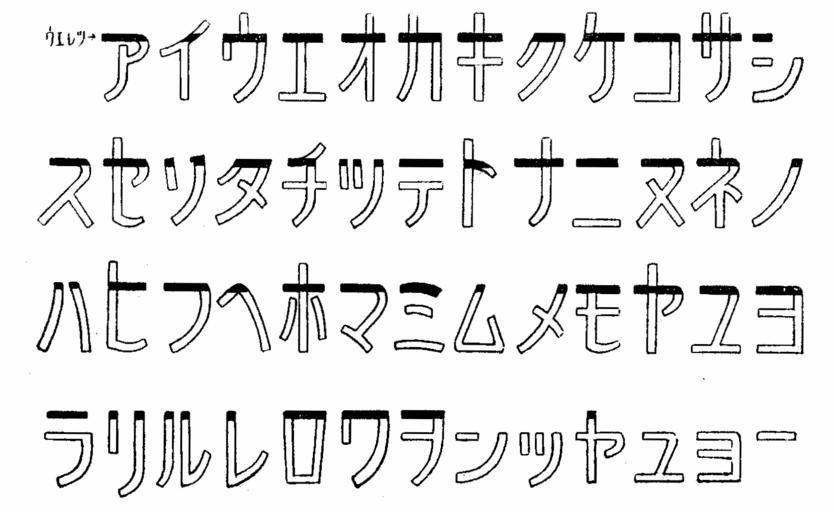MAKE A MEME
View Large Image

| View Original: | Japanese katakana typeface having upper line.png (1400x860) | |||
| Download: | Original | Medium | Small | Thumb |
| Courtesy of: | commons.wikimedia.org | More Like This | ||
| Keywords: Japanese katakana typeface having upper line.png Japanese katakana typeface having the upper line to form the unity of characters consisting a word This image was scanned at 300 dpi 単語をなす文字のまとまりをつくるために ウエレツ をもっているカタカナの書体 このイメージは300 dpiでスキャンされた Kanamozikai Kana Character Foundation p 70 1935 カナモジカイ と 国語 協会 文字 文化 展覧会 出品物 解説 カナモジカイ 第70ページ 1935年 1935 カナモジカイ と 国語 協会 <div lang en xml lang en > Reason and typeface for horizontal writing with katakana At the beginning of the kana character movement in the Meiji period vertical writing with hiragana was used However it needs to be read character by character and even a person used to it could not read it as fast as writing with kanji Hence the movement did not spread at last Research was made later and as its result it was shown that left-to-right horizontal katakana writing with improved typefaces can be read as fast as writing of western languages in which characters are combined to form a unit Consequently it can be safely said that today's kana character movement is equal to the horizontal katakana movement Characters of conventional katakana typefaces differ character by character in angles of their strokes and do not create unity Nevertheless so drastic modification of typeface is undesirable that anyone cannot read without learning The Kanamojikai is trying to arrange the typeface within the scope of everyone's immediate recognition of the characters and it has already manufactured movable types having several different typefaces Characters having a unity require not only modification of each character but also introduction of connecting element commonly included in every character In Latin alphabet the baseline under k h m etc behaves as the element; in katakana the black elements shown in the figure below do the same Lines sticking out of the top of characters ウ U カ KA etc work for making each word have a unique distinctive form With this typeface people can read words just in the same way as a person used to English writing reads the three characters of boy at a glance </div> PD-Japan This image is in the public domain under Article 53 1 of the Copyright Act of Japan because it was authored under the names of corporate bodies and published more than 50 years ago Kanamozikai CJK typeface samples Gojūon katakana | ||||